Vytautas Michelkevicius curator in residence in The Hague (NL)
| 2014-01-27 16:47:10
Since the end of 2013 Satellietgroep is programming two of the Gueststudios at De DCR in The Hague. Satellietgroep visited Nida for research in January and curator Vytautas Michelkevičius is currently resident at DCR Gueststudio in The Hague.
Curator, art and media researcher, lector at Vilnius Academy of Art and former artist Vytautas Michelkevičius (LT) holds a PhD in Communication and Media studies from Vilnius University. Since 2011 he is artistic director of Nida Art Colony – artist in residency and experimental education space on the Baltic Sea Coast in Lithuania. At the moment he is doing post-doctoral research on artistic research as intersection between art practice and humanities and social sciences.
www.nidacolony.lt
www.gueststudio.com | www.dedcr.nl
During 'Guest Who #1' Satellietgroep and Vytautas Michelkevičius, curator of Nida Art Colony in Lithuania will introduce the collaboration and the concept of the Inter-format Symposium, so join if you are interested and/or want to submit to the Open Call.
INVITATION 12 FEBRUARY 'GUEST WHO#1'
Location: Zaal 3, De Constant Rebecqueplein 20A, The Hague
Time: Entrance open 19:30 start program 20:00 until 21:30, 22:00 drinks
Entrance: Min. € 3,50 - Max. € 7,50 p.p including a drink!
Purchase the show collectively with all other visitors by pitching in your share. The more visitors, the cheaper the ticket, so bring all your friends and colleagues to lower the ticketfare! Tickets can be purchased on the 12th at the door.
Organization: Wander, Satellietgroep and Zaal 3 - Theater aan het Spui.
'Guest Who' is an informal yet substantive evening where the audience will be served a whole range of impressions on the upcoming cultural activities, exhibitions and residencies in The Hague. During this monthly evening an ever changing selection of The Hague based initiatives will blurb and blab about their upcoming program. Afterwards there´s a meet, greet & drink with the artists/curators at the bar. Join us for the upcoming edition February 12th in Zaal 3 and hear all about Wander, Satellietgroep, Theater aan het Spui and 't Gras van de Buren.
Satellietgroep is part of the curatorial board and in collaboration with Nida Art Colony is currently developing the Inter-format Symposium at Nida in Lithuania called 'On Flux of Sand and Aquatic Ecosystems' in May. Both Satellietgroep and Nida Art Colony are located in coastal transition areas, in which on local scale man-made ecosystems are enormously affected by worldwide prospects of climate change, shifting economics, politics and tourism.
OPEN CALL FOR CONTRIBUTIONS TO INTER-FORMAT SYMPOSIUM:
ON FLUX OF SAND AND AQUATIC ECOSYSTEMS
Inter-format Symposium 2014 at Nida Art Colony Lithuania
May 22–25, 2014, Nida, Lithuania. Deadline for proposals is February 15.
Curatorial Board: Rasa and Raitis Smits (RIXC, LV), Andrew Gryf Paterson (Pixelache, SCO/FIN), Erich Berger (Finnish Society of Bioart, AT/FI), Jacqueline Heerema and Ronald Boer (Satellietgroep, NL). Curator: Vytautas Michelkevičius (LT) of Nida Art Colony.

Satellietgroep is based in The Hague (The Netherlands) a few kilometers from the Zandmotor (Sand Engine) near Kijkduin, the latest Dutch innovation on coastal protection, called 'building with nature'. Photo credits: Joop van Houdt, www.zandmotor.nl

The Zandmotor is due to its dynamics now called a spit with lagoon.
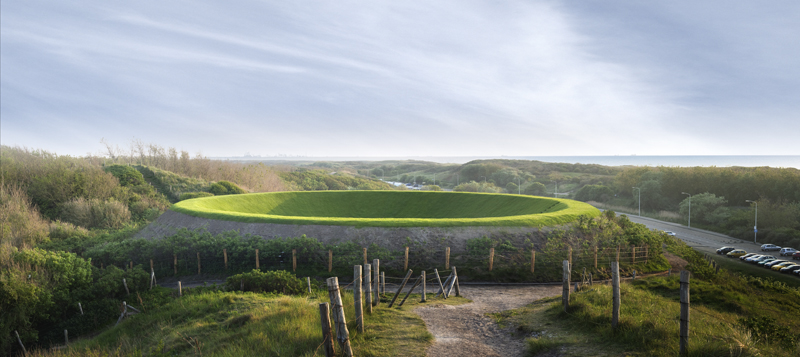
In the dunes south of The Hague, where light can have such a tangible presence, James Turrell created an artificial crater to gaze at the sky, called ‘Celestial Vault' in Kijkduin. At the top of one of the rubble dunes, a bowl in the shape of an ellipse has been built, 30 meters wide and 40 meters long. Photo credits: Gerrit Schreurs, www.stroom.nl/nl/kor/project.php?pr_id=4616026
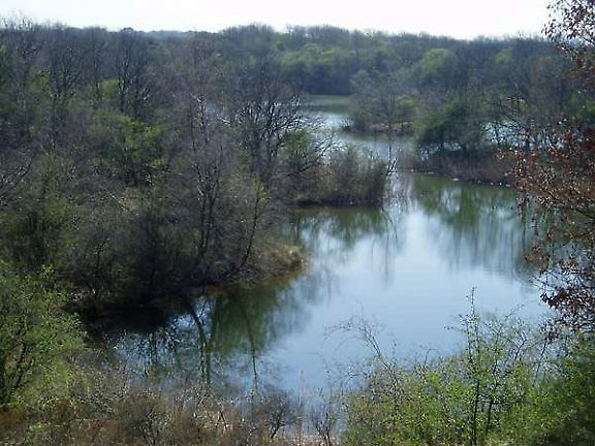
Since 1940, in order to be able to continue to supply clean water, river water which has already been filtered once is diverted to the dunes to filter it anew. To the north of the Hague along the dunes you see pools with water that is filtered here. A disadvantage of this method is that the pollution stays behind, making the soil richer in nutrients and in doing so lessening the wealth of plants species. New methods of depth infiltration are developed in order to meet these disadvantages.
Selection of Dutch participants for Symposium at Nida (LT)
| 2014-04-18 10:52:32
Seven Dutch partcipants are selected to participate in the symposium at Nida Art Colony in Lithuania, May 22-25: Jan de Graaf, Marinus van Dijke, Edwin Deen, Theun Karelse, Jeroen van Westen, Bram Esser and Francois Lombarts. The team of Satellietgroep is part of the curatorial board and presents three different approaches to the themes of the symposium.
The project is supported by the Embassy of the Netherlands in Lithuania.
JAN DE GRAAF :: urbanist
Born on a Caribean island and raised in a bunker on a Dutch Waddenisland, I like to focus on the tension and collaboration between the militairy gaze and the artistic gaze; the object of the gaze are the dynamic and fluid coastal landscapes of north European seas (the Baltic and the North Sea). Related to the phenomenon of world heritage in general, I like to detect the edge between natural world heritage (like in the Netherlands the socalled Waddensea, intertidal wetlands) and cultural world heritage (like the Curonian Spit). Both are UNESCO-enlisted to promote education, science and culture, at the end to stimulate a peacefull climate of intercultural understanding. Big words yes, but let us reconsider them, eye witnessing the turbulent map of Europe today.
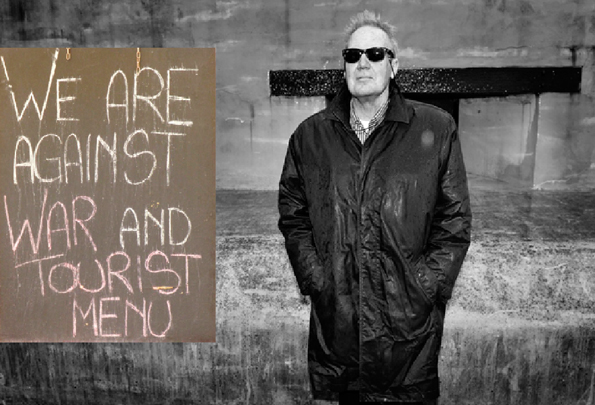
MARINUS VAN DIJKE :: artist :: www.marinusvandijke.nl
As son of a lighthouse keeper, I have taken a special interest since 1996 in one dune-valley on a Dutch island, which I call ‘de Plek’ (the Spot). I am confronted with a dynamic location, where sand is the changing main actor. This creates a landscape which has both a vulnerable, small-scale and yet at the same time robust and monumental character. After concentrating on the details new images reveal themselves. These are images show the temporality of changes that occur in a matter of days, sometimes even in hours.
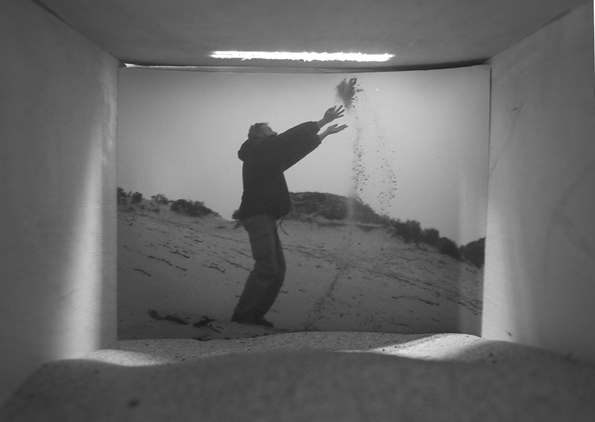
EDWIN DEEN :: artist :: www.edwindeen.nl
I explore and show the hidden nature in seemingly un-natural/artificial man-made things we find in our daily environment. I am interested in physical and cultural processes and the use of everyday objects and basic materials. I criticize our fabricated and consumer based world but at the same time bring an ode to it, by representing its elements through its own universe.
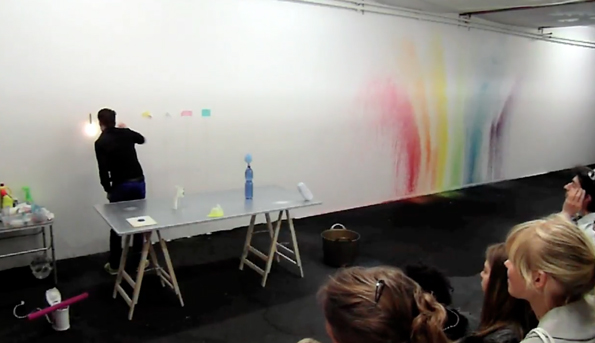
THEUN KARELSE :: artist :: www.fo.am
We all were indigenous peoples once. And attempts towards restoring ecosystems are starting to happen worldwide. Both classical conservation and rewilding as two ends of the spectrum have their weaknesses. In Neringa (Curonian Spit, LT) the system is particularly dynamic ecologically and historically, but the restoration process was started a very long time ago. What lessons can be learned from this unique historical effort? How can they benefit communities and landscapes where the process is only just starting? How can visitors, artists contribute meaningfully to the health of the landscape or reflect on the processes that enabled it?
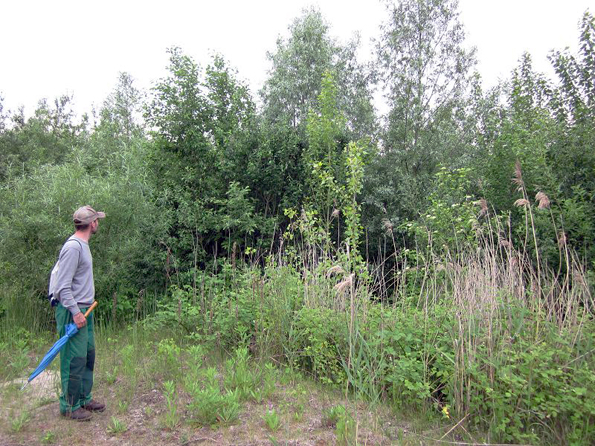
JEROEN VAN WESTEN :: artist :: www.jeroenvanwesten.nl
I am no longer naive about how the tide can wipe the beach clean, and the world starts over again. I now know that we need a memory to be able to make decisions. Each landscape is dynamic, todays changes of the landscape do alter the readability of our external cultural memory in the future. I am looking for ways to create conditions for an open exchange between past and present, nature and culture, trying to discover essential - local - characteristics and dynamics that can carry the history of a place forward in its future.

BRAM ESSER :: philosopher :: www.bramesser.com
I want to know how people live. I want to find out how they create meaning by using the space they inhabit and I always try to become part of their world for a while. I need to take part in order to be able to reflect on it. The impossibility of becoming part of something only temporarily and the disappointment this involves, are part of the answers I get from these plainly “naive” social experiments.
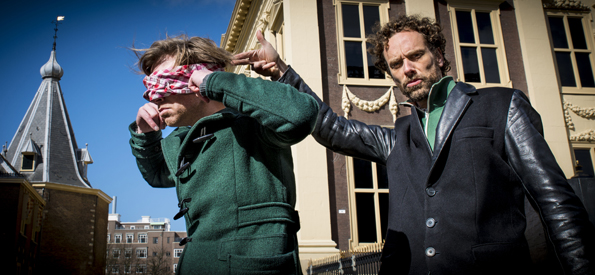
FRANCOIS LOMBARTS :: designer :: www.francoislombarts.com
I am not necessarily interested in landscapes but I want to submerge myself into a landscape, to get as physically close as possible to the conditions of a particular landscape. Therefore every landscape I work with demands a specific and unique approach, to be able to experience the physical sense of the landscape, its history and culture to it's full extend.
.jpg)
EXPEDITION ERIDANOS :: travelling through the antropocene
During 'Expedition Eridanos' philosopher Bram Esser and designer Francois Lombarts are travelling from the Zandmotor Spit in The Netherlands to the Curonian Spit in Lithuania. Their aim is to find the 'making' of The Netherlands by discovering and retracing the geological sand to the origins in the northern Baltic Sea by following the mythological river 'Eridanos' on foot along the current coastlines.
https://www.facebook.com/ExpeditionEridanos
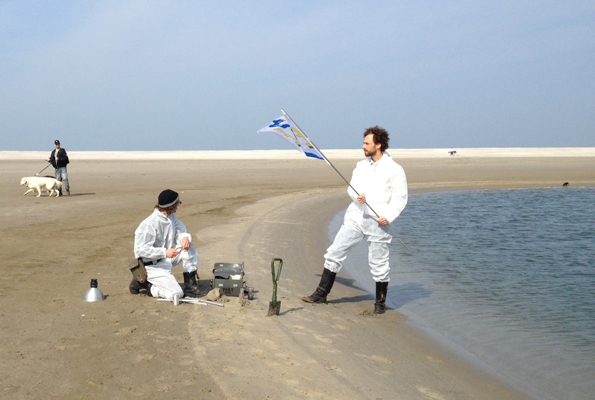
Support research fieldtrip 'Expedition Eridanos' (NL-LT)
| 2014-02-27 14:33:21
CONNECTING THE NETHERLANDS TO LITHUANIA:
NORTH SEA TO BALTIC SEA - EXPEDITION ERIDANOS
Travelling from the Zandmotor Spit in The Netherlands to the Curonian Spit in Lithuania. During 'Expedition Eridanos' philosopher Bram Esser and designer Francois Lombarts aim to follow the origins of the making of The Netherlands to the roots in the northern Baltic Sea by tracing the mythological river 'Eridanos' on foot. According to the myth this river deposited the sands that we now use to protect our Dutch shores.
Your donation makes this endavour possible!
Transfer your generous donation to the bankaccount of stichting Satellietgroep, The Hague, NL:
IBAN:NL43TRIO0390467332
BIC:TRIONL2U
In return you'll receive exclusive reports by Esser and Lombarts during the research fieldtrip.
Start at the Sandengine: as you can see the Sandengin is now a spit with lagoon.
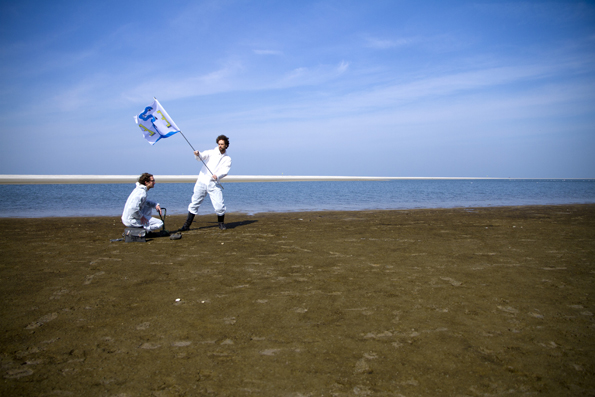
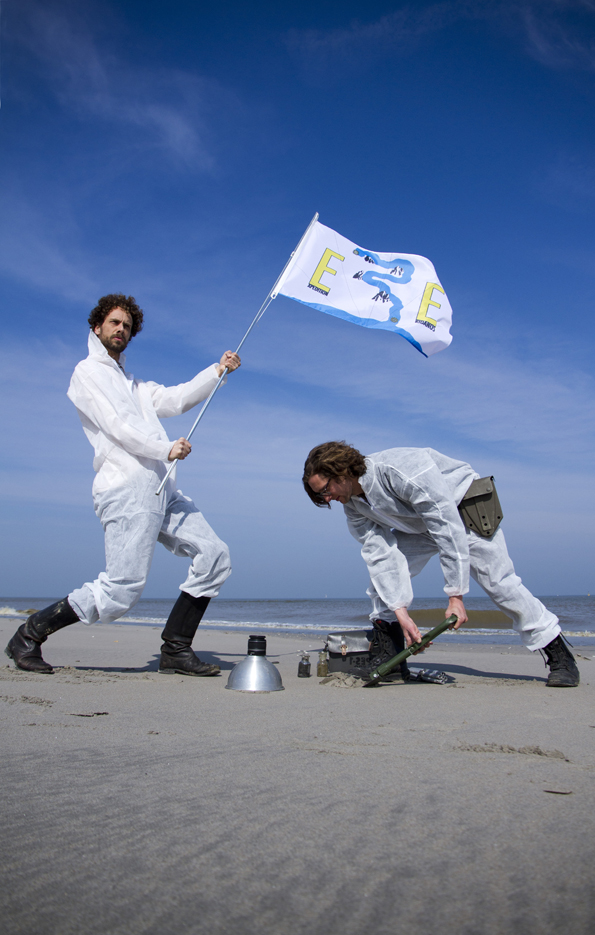
Photo: Machiel avec Pleijsier: www.avecpleijsier.nl
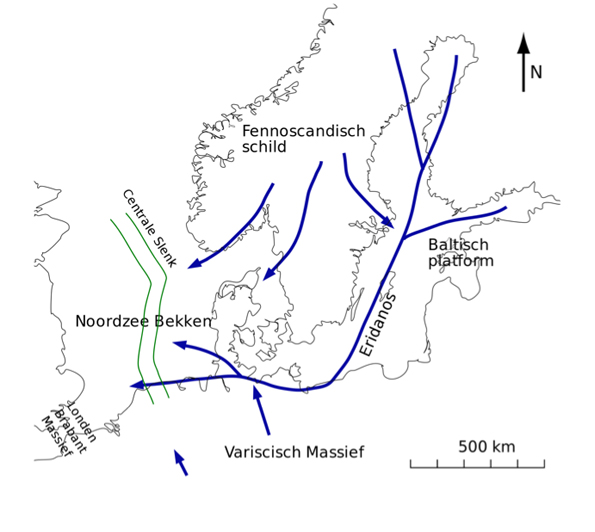
The Eridanos is a geological theory of a prehistoric river, believed to have run through Northern Europe. It is described to have been Europe’s greatest river, comparable in size and influence to the current day Amazon. It had its source in Lapland and ran down through the Baltic States, Poland, Germany and built an immense delta and essentially gave birth to the Netherlands. The river Eridanos slowly transformed during and after the last ice age, it became a sea, the Baltic Sea.
The journey is a quest, a form of physical geography, a long trek along the supposed route of mythical Eridanos towards its and our origin. It is a physical artistic study, based upon the ‘10 rules for New Travel’, a collection of rules formulated by philosopher Bram Esser. The manifesto was inspired by the Danish Dogma film manifesto, which was intended as a quest for meaning in an technology dominated film industry. The rules for the post-traveler can be seen in the same light and are meant as a set of rules making it actually more difficult to move from one place to the other. Experience is the result of overcoming these difficulties.
The '10 rules for New Travel’ are:
1.Time.
The post-traveler travels slowly, not fast.
2. Space.
The journey itself that the post-traveler undertakes defines the region.
3. Destination.
The post-traveler has no destination other than to be inside the landscape.
4.Travel.
The manner of travel should be chosen carefully.
5. Direction / Compass.
The post-traveler does not use existing routes, but creates his own route or rediscovers lost supposed routes.
6. Stopping.
The post-traveler stops when the time has come to tie a knot in the day.
7. Settling.
The post-traveler who seeks to establish himself as an inhabitant must rediscover/redefine his surroundings as his residence.
8. Experience.
The Post-traveler looks at his surroundings with soft eyes, only focusing now and than on the things that catch his attention.
9. Symbols.
The post-traveler navigates on stories and not on facts.
10. Identity.
The post-traveler writes a narrative of his experience in order to redefine his place in the world.
Links:
www.bramesser.com
www.francoislombarts.com
Links to previous projects:
http://www.satellietgroep.nl/archief/1/esser_bram_nl
http://www.satellietgroep.nl/stellingname/2/bram_esser_39dwaaltochten_rond_schiphol39
http://www.satellietgroep.nl/archief/1/lombarts_francois_nl
http://www.satellietgroep.nl/stellingname/1/francois_lombarts_39ik_wil_inpolderen39
